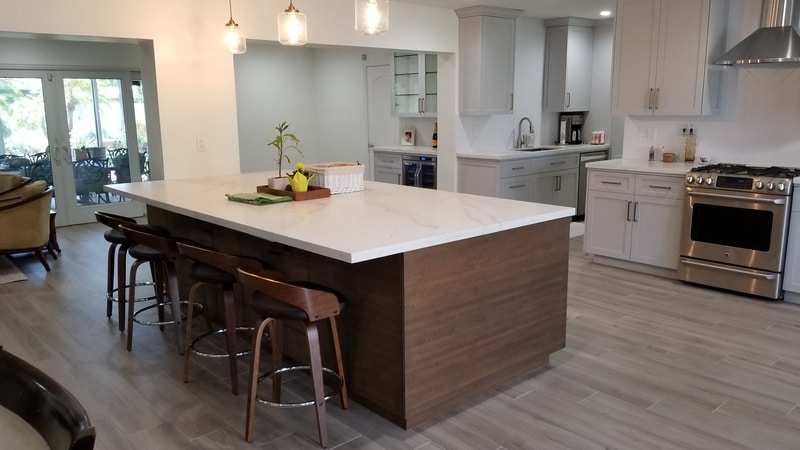When it comes to countertops, it seems there are more choices than ever. How do you choose what is right for you? There are many things to consider- the style of your home, how much use the kitchen gets, do you want it to blend into the design or be a statement, do you want it to be more trendy or timeless, etc?
Currently quartz is the most popular choice when remodeling because of its cost, durability, and wide range of options. As a composite material it is stronger than natural stone. This means it will require less maintenance and show less wear and tear over the long term. You also can book match multiple slabs so if you choose a design with veining, seams can be lined up to match perfectly to improve appearance. If you aren’t sold on man-made material, you may want to consider quartzite which is a natural stone but still more durable than granite and less porous than marble.
Speaking of granite, it is still a popular choice as well. While quartz may be more popular in modern and contemporary design, granite is still popular for traditional and Mediterranean designs. It is a pretty durable material, but sealing is still recommended as dirt and spills can cause etching and staining. Soapstone is another natural stone that is quarried. People like it for its smooth matte finish which adds a rustic look to design styles like French country. It is less heat resistant than granite and it is not impervious to stains so occasional oiling and buffing is necessary. Although natural marble is beautiful, it is a softer, porous stone and generally not recommended for the kitchen. If you do decide that is the look you love, be prepared for regular maintenance.
There are several other lesser known options that you may want to consider as well. Stainless steel, butcher block, and concrete are currently popular, especially for creating an island that “pops”. You may see them used in modern farmhouse, industrial, or transitional designs. Corian, or solid surface countertops are another product to consider. They are entirely man made from an acrylic composite. While they are not as heat resistant as some of the other options, they are nonporous and will resist staining. They have a very wide variety of colors and patterns making it a good option for most home styles. Lastly, laminate is still an option and the most affordable if you have a tight budget.
Once you have settled on your material, there are a couple other important things to consider. A lot of popular choices are now available in 2cm and 3cm thickness. Although 3 cm is more expensive, you may save a little on fabrication because it is popular to install with just a straight finished edge. If you want a thicker, or fancier edge, you might as well go with 2cm as there will be an additional charge per linear foot to finish off the edge to your specifications. Again, you should choose an edge style that goes with the overall look you want to achieve. If you are going modern or contemporary, the straight edge (with either an apron or mitered to increase thickness) is most common, although a simple bevel is popular too. A radius or bullnose finish produces a softer, rounded edge for traditional design. The ogee is a fancier edge popular in Mediterranean design. There are many styles so you definitely want to decided what you like ahead of time. Not all fabricators all capable of doing more than the basic edge types. Choosing a highly capable fabricator who is very familiar with your material of choice is just as important as the material itself in achieving your desired look.
